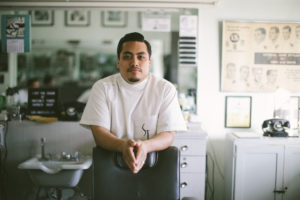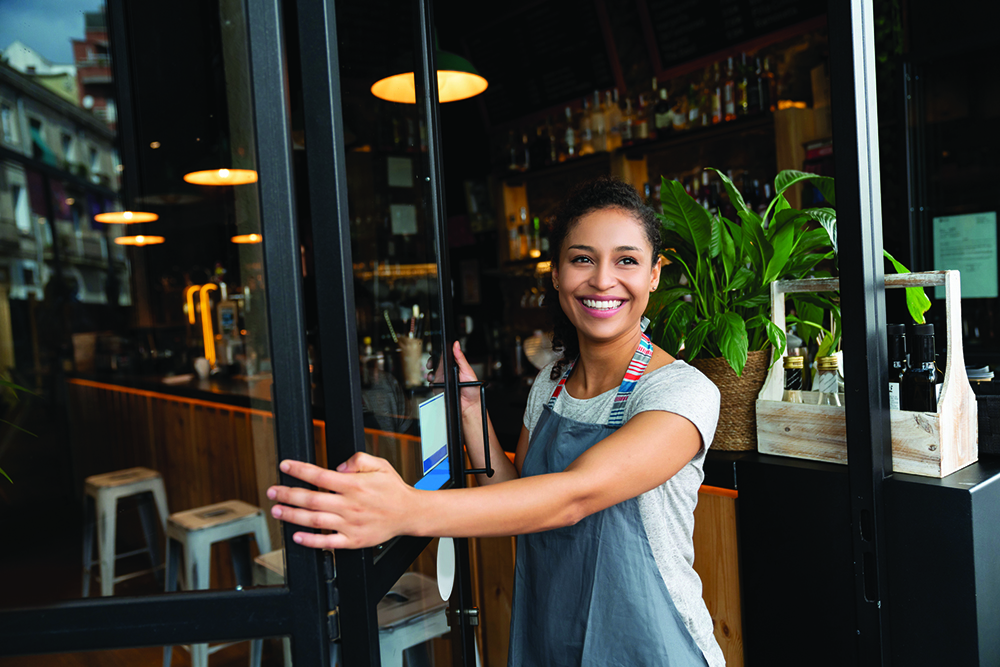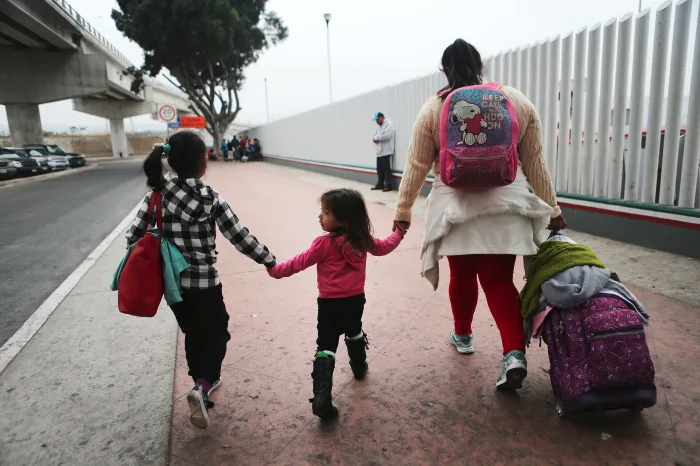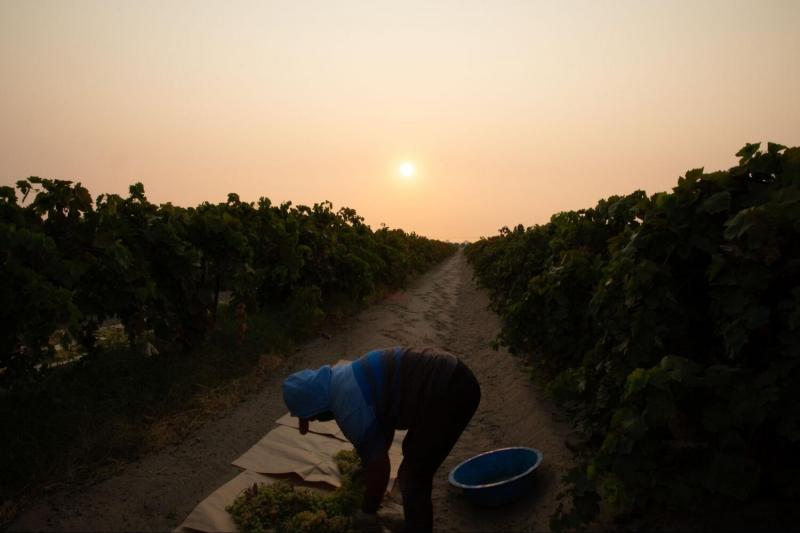by Abraham Márquez and Zaydee Sánchez
Palabra
Editor’s Note: This article was produced as a project for the USC Annenberg Center for Health Journalism’s 2021 California Fellowship.
Friday, October 15, 2021 – The hour hand strikes 3 am. It is still dark out. Silvia’s cell phone vibrates, and her madrugada, her pre-dawn ringtone, goes off for the first time.
The scene repeats itself every morning for Silvia García, who described how something like muscle memory automatically moves her hand toward the snooze button.
Five more minutes of eye rest, she said, like a morning mantra.
“We are up early because I have to wake my kids up and get them ready for the rest of the day, and also get to the fields,” said García, an indigenous farmworker from Mexico’s Guerrero state.
García works farm fields in California’s Central Valley. After many years of this work, getting up so early is still not easy. She puts in long shifts across six days of the week, in blistering summer heat and winter’s cold. Today, routine body pains and soreness are the bad fruit of her labor.
García and her husband are farmworkers, and after dropping the kids off at her parent’s house on a recent summer morning, they are harvesting fruit by 4:30 a.m.
García is not alone. Labor statistics say 407,300 workers, mostly Mexican and many undocumented, prepare, maintain and harvest fruit, nuts and vegetables up and down the nation’s richest agricultural state.
But often overlooked in these numbers is a growing population of farmworkers for whom even Spanish is a foreign language. At least 165,000 of California farmworkers are believed to be migrants from indigenous communities in Mexico. The coronavirus pandemic has exposed them to serious gaps in health care. Even before COVID-19, doctors, vaccines and medicine were well out of reach of indigenous migrant workers who live in fear and mistrust on the margins of U.S. society.
A recent study of California’s farm hands revealed that very few migrants of indigenous origin are covered by medical insurance; six of every 10 indigenous migrant women have not visited a doctor in the U.S. Moreover, as one indigenous farmworker said, the sick from his community are more likely to be willing to cross back into Mexico — despite the danger and cost — than face uncertainty and a perceived threat of deportation in California clinics and hospitals.
This inequity comes amid a pandemic that has proved acutely lethal to Latinos in the U.S. One study says it has shaved three years from the average U.S. Latino’s life expectancy.
ONE OBSTACLE AFTER ANOTHER
All this turned García into a health care activist. Despite the fear of exposing her family and being pregnant with her fourth child, she took on a second job, visiting homes of indigenous immigrant laborers to assess their health needs. Yes, migrating to a new life in the United States has offered new opportunities and a better life to García and her family. But it’s come with a price, she said. Much of the same fear and racism her family experienced as indigenous people in Mexico followed them to the U.S. “I don’t want more people like me to experience the same challenges; I want to change that.”
García was born in a small town near Mexico’s southern Pacific Coast. Tlapanec was the first language in her home, even though her parents were reluctant to teach it to her.
“My parents taught me to speak Spanish and not Tlapanec; they didn’t want me to experience the racism my older brother did,” García said in a recent interview with palabra and the Center for Health Care Journalism.
In Guerrero, as in other Mexican states with significant indigenous and Black populations, discrimination in jobs, education, and delivery of social services is rampant. In 2020, the Mexican National Institute of Statistics and Geography released a study, the National Survey on Discrimination, that revealed “24 percent of indigenous people had experienced discrimination and 75.6 percent felt under-valued.” As of 2020, 15 percent of the population in Guerrero spoke a native language, according to a national educational survey, Información de México para niňos.
“The journey through the desert to get here was one of the hardest things I’ve experienced,” García said. She was nine years old when her parents decided to migrate north. After the physical challenge, they arrived in a country where a majority speaks English and the other primary language is Spanish. Her parents didn’t speak English and their Spanish was limited. As a child, she had to become the family translator.
“At first, when I was little, we didn’t go outside a lot or look for (healthcare) services because we were scared of (deportation),” Garciía said.
“I was afraid of putting my family at risk,” said García, who was pregnant with her fourth child and yet decided to add the second job. “I had to change my routine because I was being exposed to people.”
ISOLATED BY LANGUAGE
García is among a population of indigenous farmworkers in California that, according to one study, speak 23 different languages. Most arrived from 13 different Mexican states. More than half speak Mixteco and another 30 percent speak Zapoteco. These are the dominant indigenous languages in the Mexican state of Oaxaca and the country’s south-central region. Tlapaneco, García’s family’s language, is spoken by just under 10 percent of California’s farmworker community.
Diversity in languages poses an obstacle for California officials hoping to extend pandemic health care services into the state’s rural reaches.
“Indigenous farmworkers are at a severe disadvantage when it comes to obtaining health care in California. They access care at rates far below the general population and decidedly lower than other Mexican-origin farmworkers,” according to the indigenous farmworker study. A telling statistic: While 86 percent of women in California have seen a doctor, the number drops to 75 percent of women farmworkers, and then to 62 percent among indigenous women.
The indigenous population is one of the poorest in California and is routinely under-represented in U.S. health care, according to the farmworkers study.
“Only nine percent of indigenous Mexican interviewees were covered (by health insurance) and nineteen percent of their spouses,” the study said. Health insurance covers 31 percent of the non-indigenous farmworker population, and their children are more likely to have some type of coverage if they were born in the United States. If a family lives below the poverty line, publicly funded healthcare programs are available.
THE PANDEMIC THREAT
Even before COVID-19, to reduce the family’s exposure to pesticides, many workers followed routines of showering and washing clothes right after their shifts. Yet 90 percent of farmworkers have altered their after-work behavior: they change out of work clothes and shoes before entering the home, according to the COVID-19 Farmworker Study conducted by a coalition of researchers.
It’s evidence that farmworkers recognize their vulnerability in the pandemic. That said, García added, most indigenous migrants — herself included — are hesitant to talk about the pandemic’s impact on their mental health.
“I keep saying I am fine, that I am okay because I have no choice but to work and provide for my family,” García said.
The National Center for Farmworkers Health insists that greater cultural understanding of indigenous farmworkers is needed in order to address their mental health needs. In a study the center found that, “Numerous culture-bound illnesses that are widely acknowledged, including susto, nervios, mal de ojo, empacho, coraje, and ataques de nervios” — trauma and maladies like eye infections and gastritis.
While deep studies of farmworker mental health are rare, California data does provide evidence that at least one of every five “farmworkers have a history of major psychiatric disorder.”
“Working the fields and raising a family, I work from 3 a.m. to 8 p.m. I don’t have time to seek therapy,” García said, even as she acknowledged the benefit of getting help.
Others are starting to open up as well, at least privately, García said. In her home visits, workers talk about the anxiety, stress, and fear that are part of their daily lives because of the fear of deportation. The pandemic has worsened their outlook, she said, as indigenous migrants now also fear infection and job loss.
LANGUAGE AS A HEALTHCARE OBSTACLE
The variety of indigenous languages spoken in California’s farm fields reflects the diversity of Mexico’s indigenous people. There they speak 68 officially recognized native languages which in turn are subdivided into more than 350 linguistic variants.
For decades, indigenous people from Mexico have migrated north to find work and a path out of poverty. Along the way, though, they face cultural and linguistic obstacles that hinder access to health care. A large number come from remote communities in Mexico and start out on the migrant trail with low understanding of medical terminology and services, and the bureaucracies that frame health care. Women are hesitant to speak to male doctors and nurses, especially about reproduction and sexuality.
Because of mistrust and the high cost of uninsured health care in California, many migrant workers seek services in Mexico. Even the undocumented will go to doctors in Tijuana and risk dangerous and expensive crossings back into the United States.
“When they get seriously ill, they go to Mexico, and afterward they brave the border to get back. Few use the medical services (in California),” said a 36-year old Triqui farmworker in the Salinas Valley.
Not even 19 months of a pandemic have stemmed a reluctance made worse by a fear that law enforcement will discover them. People with no representation or legal status have avoided hospitals during the pandemic “out of fear that their information might be released to ICE,” said Ismael Castro, a project manager at Building Healthy Communities organization in the Boyle Heights neighborhood of Los Angeles.
Despite the best intentions of some lawmakers and activists, there are not enough indigenous language interpreters.
“Interpreting is always required under state and federal law, that also includes Indigenous language interpreters too,” said Marisa Lundin, legal director of the California Rural Legal Assistance organization.
California’s Central Coast farmlands, around Ventura, lead the state in hiring indigenous-language interpreters, mostly Mixteco speaking, reflecting the local farmworker population. But even there, few services exist for Zapotec and Triqui speakers, the second and third most common languages in the fields.
Elsewhere, compliance with the medical interpreter rule is hard to find. From the fields where Garcií works, near Kingsburg, the nearest hospital or emergency clinic is 12 miles away. No one there speaks Tlapaneco, and they don’t have translators on stand-by. Staff at the facility said that with some lead time, they can find a Mixteco translator. This gap can cause critical delays in emergencies.
More often, hospitals rely on patients to bring someone who can translate, even a child. This is risky, experts said, as it can lead to misunderstandings of technical terms and procedures.
COVID-19 AND VACCINE INFORMATION
Garcií said that because of the language barrier, indigenous farmworkers are not well informed about professional health care clinics and frequently don’t know where to go when they are ill. This is no fault of their own, she said. And, farmers are not held responsible for providing such information. In 2020, this dynamic became an acute concern. Early in the pandemic, death rates were high in urban communities. But the pattern reversed, and rural areas have seen increased death rates.
Death rates show that low-wage workers and immigrant communities are at higher risk of infection and death. Therefore, getting the right information about the virus and vaccines translated into the right language can be life-saving.
Motivated to help her indigenous community, García started working for Centro Binacional Para el Desarrollo Indígena Oaxaqueño. “My schedule was the same; I will show up at 4 am or 5 am at the fields, but (now) to provide them with information about COVID-19 testing and safety measures they can practice,” García said.
The organization turned García into a bridge of information, from mainstream U.S. healthcare to her indigenous community.
What she preaches is the scary reality about COVID-19 and California’s Central Valley. The virus attacks the lungs and respiratory system, and the valley’s air is notoriously laden with pesticides, dust and petrochemical pollution. A region that stretches from Bakersfield to Stockton ranks amongst the highest in California for asthma and asthma-related hospitalizations.
García’s advocacy with the United Farm Workers Foundation has also been a channel for her drive to educate migrants about free essential services, such as not having to pay a fee to apply for protection from deportation through the Deferred Action for Childhood Arrivals (DACA), COVID-19 vaccine events, food-distribution sites, and even masks and hand sanitizers.
ONE DEATH TOO MANY
Last June, 39-year old Guillermo Gomez, a farmworker in rural Orange Cove and the sole provider for his family, drove himself to a hospital when he had trouble breathing. Doctors told him he’d be home in three days. But then he was intubated. And after a six-week battle with the coronavirus, he died, leaving behind his son William, and wife, who is also a cancer survivor.
Gomez’s death is just one among the many tragedies that have struck essential worker communities across the United States. University of Purdue researchers say “about 9,000 agricultural workers in the U.S. have died of COVID-19 and nearly a half-million have been infected.”
Structural inequalities in U.S. healthcare and economic systems increase the risk of exposure and mortality for farmworkers. They believe they cannot miss work. And unlike most other laborers, farmworkers don’t have comprehensive workplace rights. For example they don’t automatically get sick pay or vacation time. If they have to take time off, it’s often money out of their pocket.
The coronavirus has cut life expectancy for everyone in the United States. But for Black and Latino populations it now means three to four years shorter life spans than for white people.
California does not collect data on recipients’ occupations, so it is unclear how many farmworkers have been vaccinated. However, throughout Central Valley’s fields, mobile vaccination clinics can be found. In addition, the UFW Foundation hosts vaccination events each month.
“In the early stages, we were struggling with getting farmworkers vaccinated,” said Jorge Medrano, an organizer with the UFW Foundation. “Once we were able to get testimonies from some indigenous farmworkers that got vaccinated, that helped us a lot, they were able to talk to their own community.” It takes time, patience, and empathy, Medrano added, to build trust with the indigenous community.
FROM FARMWORKER TO ACTIVIST
“We took the streets and marched in Washington, D.C. and chanted so that Congress could hear us,” García said, recalling the UFW protest she joined this fall in Washington, D.C.
The march was in support of the Farm Workforce Modernization Act, which would provide undocumented farmworkers and their families clearer paths to citizenship.
The bill, passed by the U.S. House of Representatives but stalled in the Senate, is fuel for García’s activism.
“I am driving to Bakersfield and other areas to help with translating vaccine and health care information into Tlapanec and Nahuatl,” García said.
Legalization is needed to help overcome the farm industry’s chronic complacency about the health and well-being of the workers it relies on, García said. Ultimately, she added, healthcare information should be available in all languages to avoid confusion.
Companies that own the fields do not provide information on where workers can access health care services or vaccine information. She said that’s an injustice, and it has her determined to start a new organization to provide all manner of information, but especially about health care, to indigenous-language communities.
“If we educate more people in their language about health care services, the virus, and the vaccine, we can save lives,” García said.
Abraham Marquez and Zaydee Sanchez reported this story while participating in the USC Annenberg Center for Health Journalism‘s 2021 California Fellowship.
[This article was originally published by Palabra].














